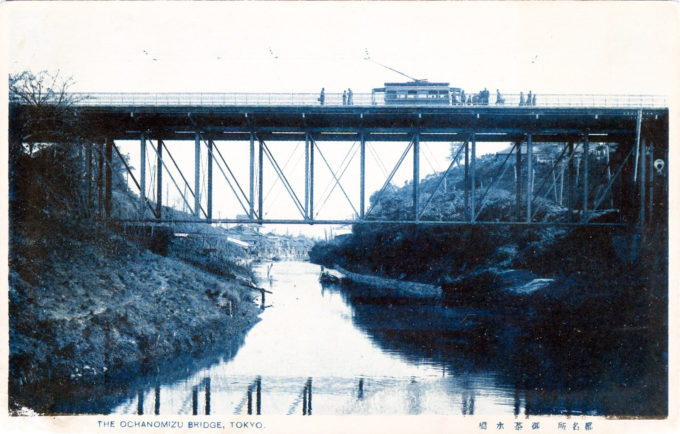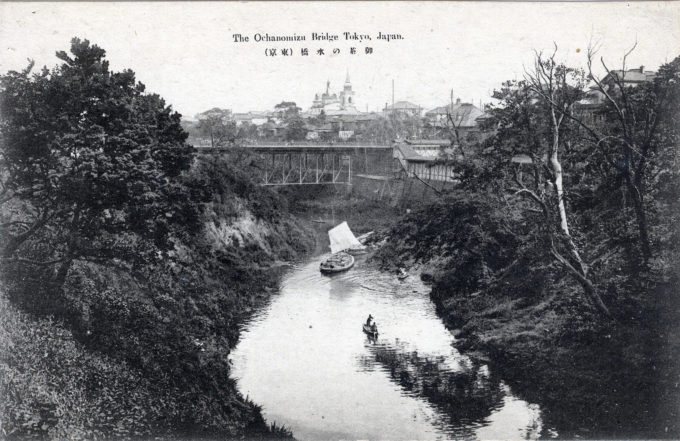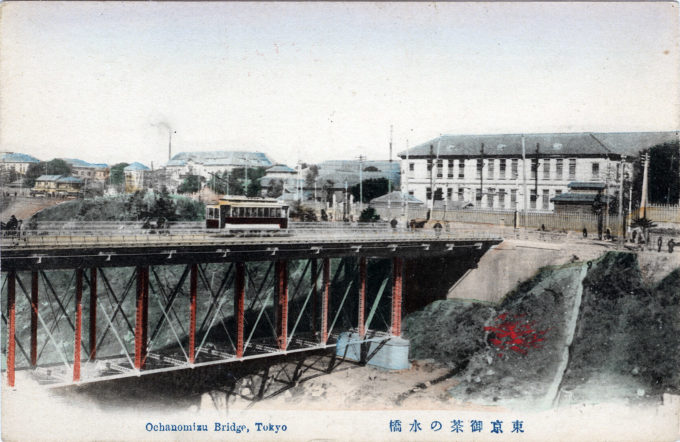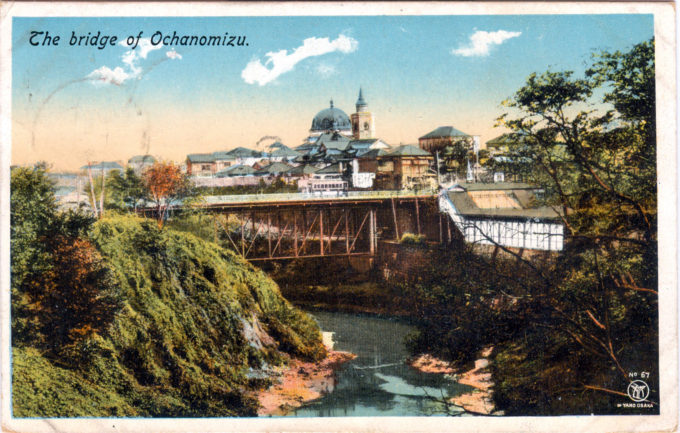See also:
Nikolai Cathedral, Ochanomizu
Kanda River.
This Meiji-era Ochanomizu Bridge was erected in 1891 across the Kanda River. It was thirty-eight meters high and 7-meters wide, and remained standing until felled by the 1923 Great Kanto Earthquake, and was replaced in 1931 with the present-day bridge structure.
“One of the finest and best-built bridges in the metropolis is that known as Ochanomizu-bashi, a beautiful and lofty iron arch which spans the canal running between Hongo and Kanda, and connects the two districts by a broad roadway from the top of Surugadai. This used, forty or fifty years ago [i.e., pre-Meiji ca. 1860], to be one of the most noted places in Tokyo, as it is still one of the most picturesque.
“On the flank of the steep slope there formerly a famous unagi-ya, or eel restaurant, with eels are served up in various styles. One day, some ten decades ago, a visitor came to restaurant. After having eating sparingly, he began to inspect the house and garden with evident interest and finally made a rough of the place. That same night, a thief broke into the restaurant and managed to get off a large quantity of booty. Suspicion of course alighted on the inquisitive visitor of the foregoing day, so that when a week or so later, he again made his appearance the police were informed and he, to his great astonishment, was promptly arrested.
Ochanomizu Bridge fording the Kanda River, Tokyo, c. 1920, with the Girls Higher Normal School (right) in view.
“Among the constables a man who knew the prisoner and him at once as being the celebrated artist Hasegawa Settan On his suggestion, Hasegawa asked why he had made his secret sketch and thus brought suspicion on himself. He said that a friend of his, Saito Gesshin, was to publish a guide to Yedo and that he been commissioned to make illustrations for the work. The place had struck him as so picturesque that he had taken several views of the restaurant and its surroundings. This statement found full credence. Hasegawa was immediately released from custody and the master of the restaurant overwhelmed him with apologies for his rudeness. The guide book appeared shortly thereafter and was for many years a standard work.”
– The Japan Daily Mail, April 6, 1895





